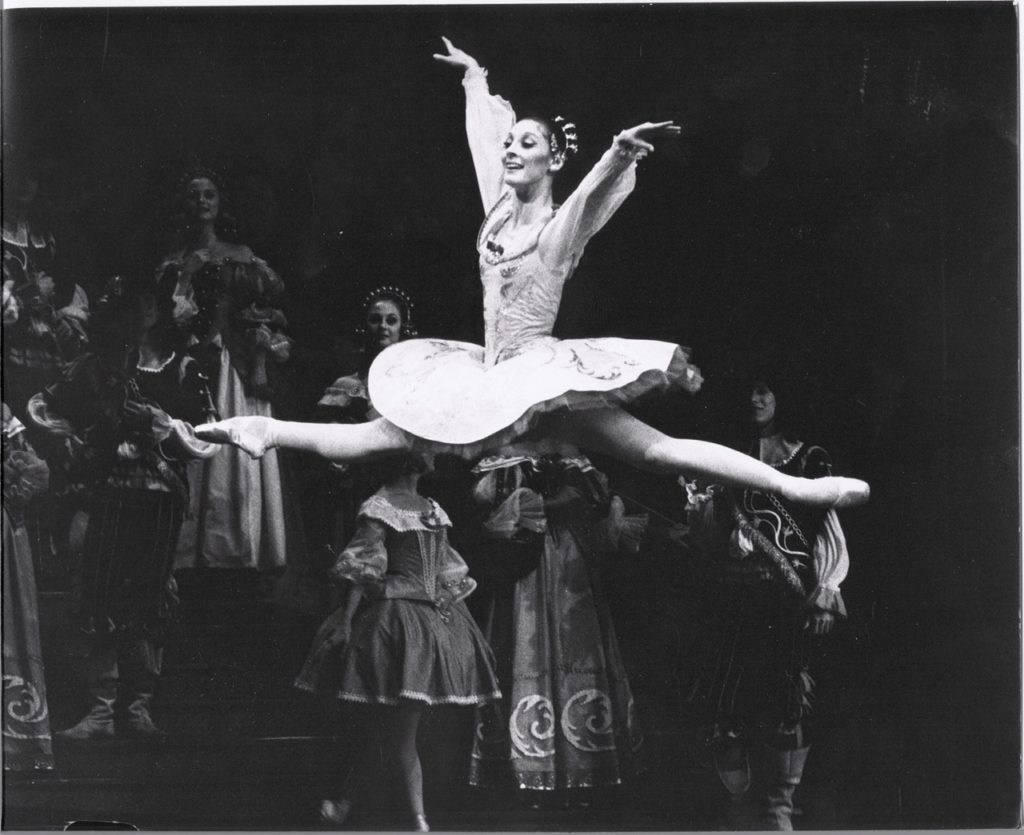Cynthia Gregory is a legendary figure in American ballet. She was an American Ballet Theatre superstar in the seventies and eighties. It didn’t matter what it was that she performed…she would take the audience into a magical world on stage. Watching her balance and stay up en pointe forever…like she does as Aurora in Sleeping Beauty is mesmerizing.
Gregory’s technique…especially her balances were remarkable. She is also known for her musicality and expressiveness…feeling the music and letting it spill out in whatever character she was portraying…a true artist and breathtaking storyteller of narrative ballets. Every little movement was delivered with meaning and intention.
She says this about teaching expression: “What’s so beautiful about ballet itself is that you’re telling a story, physically, with your body. And you have to be with the music. Not necessarily on the music, but with it, expressing it. And if you don’t let the music come through you, then we are losing something.”
When Gregory is coaching she asks dancers, “What is the story about and who is your character?” Dancers who are lucky enough to work with her learn how to be an artist not just a technician.
Here are five things you might not know about the great Cynthia Gregory:
- One of the most memorable moments in ballet history was when Cynthia Gregory was smoking a cigarette onstage as she danced the Grand pas Classique. Gregory hated Grand pas Classique because it was a strictly technical ballet and she would do the role as a different ballerina every night to amuse herself. She would channel famous dancers…Suzanne Farrell, Violette Verdy, or Carla Fracci. One night she smoked a cigarette during a long series of releves on the diagonal and put out her cigarette with a few bourrees. When Lucia Chase, artistic director of ABT, found out about it, she was told that she would never dance the role again.
- She first appeared on the cover of Dance Magazine at the age of seven.
- Gregory was tall for a ballerina…six feet en pointe. Her hight wasn’t an impairment because she was partnered by the very best: Mikhail Baryshnikov, Erik Bruhn, Fernando Bujones, Perter Martins, Ivan Nagy and Rudolf Nureyev.
- She began dancing at age five in Los Angeles when her mother enrolled her to help prevent sickness. Her nearly thirty year professional career began when she enrolled in the San Francisco Ballet school when she was fourteen. At nineteen she left for New York to join the American Ballet Theatre, where she spent more than twenty-five years.
- Gregory was passionate about American Ballet Theatre and became rebellious because she wanted ABT to believe in America and not emulate other countries ballet companies. She believed ABT should be a ballet company that gave American audiences and American dancers opportunities to dance and celebrate their own tradition…not try to be the Kirov Ballet, Bolshoi Ballet or Royal Ballet. “On its very own steam American Ballet Theater has become an internationally recognized company.”
Gregory says this about the difference between coaching and teaching… “Coaching is what I do best. People would ask me to help them with a role when I stopped dancing. They’d commission me to do that. Teaching has to do with the basics of class and technique. I’m much more interested in helping a ‘finished’ dancer when they’re looking at a role … it’s like finding your voice.”
Related posts:
Five things you might not know about Misty Copeland







 Le Ballet de Dracula: Scary good
Le Ballet de Dracula: Scary good